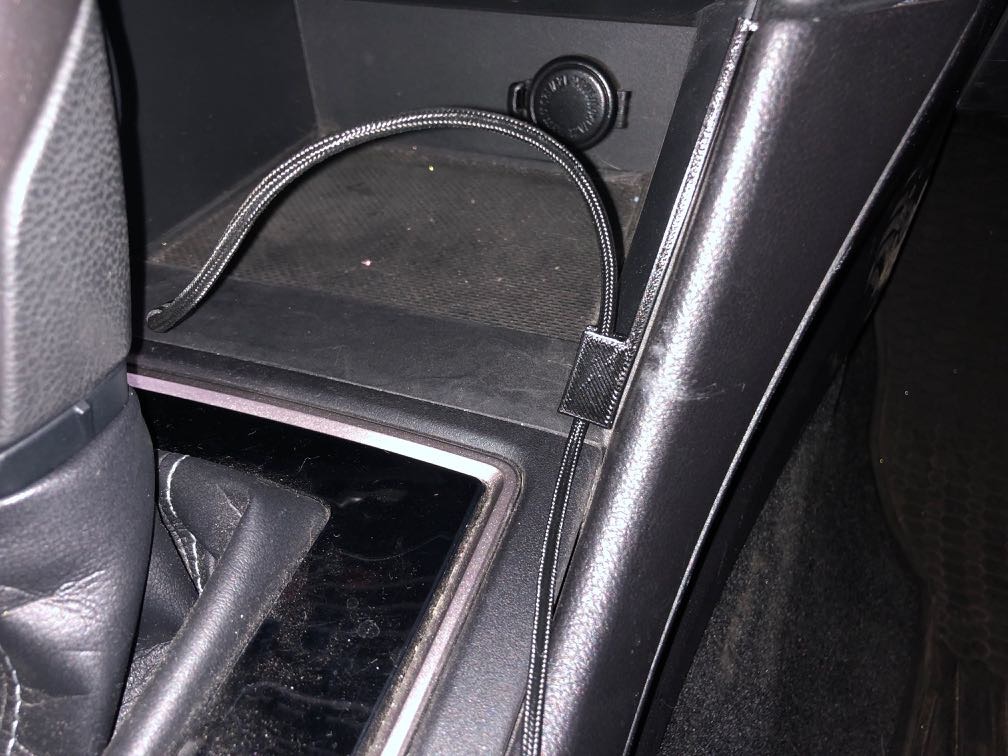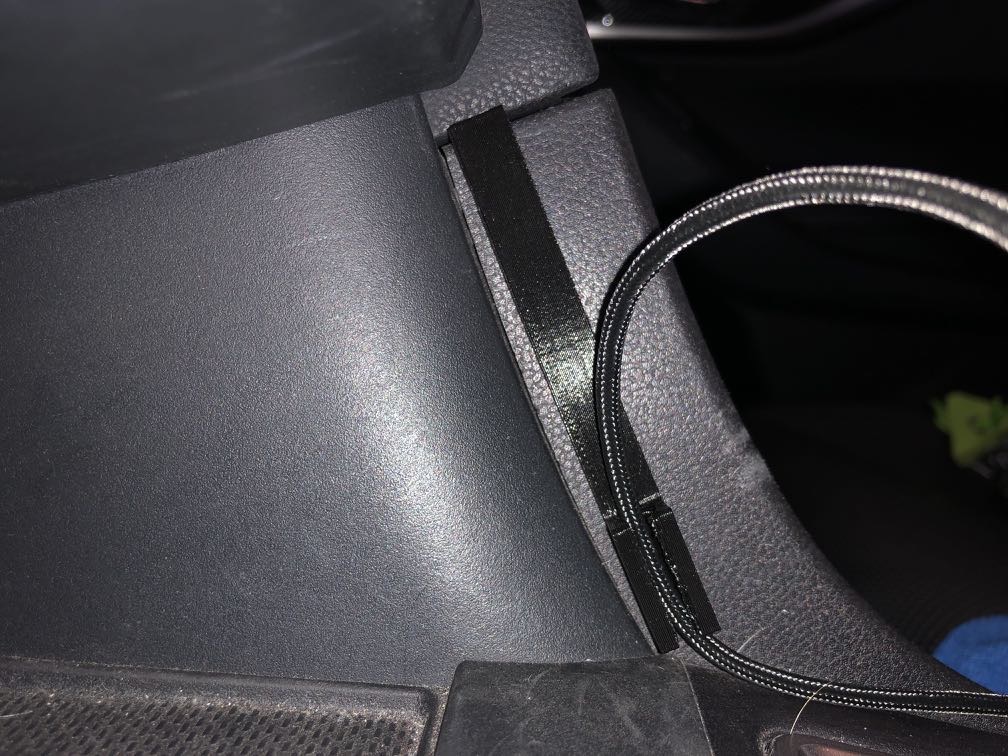-
Fixing a broken printer
Yesterday my wife came home and said she picked up a free, broken printer and wanted to know if I could take a look at it as she'd love it for her classroom. It was an EPSON ET-4750 which is the big brother to the EPSON ET-2750 that we've had for a year and been quite happy with the purchase.
Of course, I said sure I'd take a look and asked if I got it going could I swap out printers? She didn't hesitate and agreed. The problem, I was told, was that the printer wouldn't feed the paper. I opened up the back of the printer which has the feed mechanism and saw some broken plastic. Upon further inspection, I saw the broken gear where the plastic was supposed to go. Uggh, I thought. I looked at the back of our printer and it had a similar door to get to the feed mechanism, so I took it off in hopes that I could just replace it and be done. No such luck. However, looking at the broken gear I saw that our printer had the same gear on the feed mechanism. I was able to pull off the gear and put it on the broken printer and it fit! So at least I got a new printer for me 😀 That, of course, wasn't going to help my wife.
As I indicated in my post about 3D printing, I've always envisioned just being able to print spare parts and be able to prolong the life of things. A search online didn't find the gear I needed, but I did find sites that could generate gear files. I asked my wife to count the teeth on the gear and I started playing around with a site that let me enter parameters and made the gear. I tried a few parameters and tried to make the gear look what I had. I printed a test gear (the site gave me an STL file that I needed to modify a bit) and while not perfect, I thought I could make it work.
After a bit of work with TinkerCAD, I printed a working gear. While it isn't an OEM part and could be a little more precise, I'm pretty impressed with what I made. Part of the issue may just be that the 3D printer isn't precise enough to make a true replacement.


I've published my work on TinkerCAD for others to enjoy.
If you find this helpful, please let me know. Also if there is a way to start convincing companies to publish STL files for parts and you have ideas on this, let me know.
-
3D Printing comes to my home
Years ago when 3D printing started to become mainstream, I thought the technology had its place for prototyping, low volume manufacturing and printing replacement parts for appliances and other things. In my ideal world, instead of companies selling replacement parts for say a refrigerator, they could license their designs and parts could be printed at a local hardware store or the like using a variety of materials. Companies could still make money on the parts, but they wouldn't have to stock them or ship them. In addition, parts for discontinued products could be made prolonging the life of products.
As the price of 3D printers came down and became easier to use, they started appearing in schools and homes. My son started making trinkets in a class he took and I dismissed the low end 3D printers as toys. While they may have been relatively inexpensive and easy to use, I couldn't imagine a real use for one despite my son asking if we could get one a few times.
A few weeks ago, a neighbor/friend of mine gave us a 3D printer that he had for awhile, but rarely used. He gave us a XYZ Printing DaVinci Jr. 1.0. This printer is a very consumer friendly printer with very few settings to mess up, I mean configure. One downside of the printer is that you have to purchase the filament for printing from the company as there is an NFC chip in each spool that tells the printer some parameters about the filament (yes, there are hacks to get around this). For someone just starting in 3D printing, I saw that as a plus. Getting it setup should have been easy, but was quite frustrating. I made an adjustment to the Z offset and my son suggested we use blue painter's tape on the bed which worked quite well.
Now that we had a 3D printer in the house, I didn't want to make trinkets; I wanted to design and make things that we're useful. My son showed me TinkerCAD that he uses to make things and I took to it pretty quickly. The last time I touched a CAD program was 25 years ago in college and that was quite painful. TinkerCAD is easy to use and I got used to looking at designs in 3D.
I've spent a few weeks designing things and printing them; my skills are getting better and I'm not sure there is an end in sight! I didn't know that I could solve so many problems by making parts. I also didn't know that I had so many problems before I started looking for them!
The sky is the limit and I'm going to keep designing and making things!
Here are a few pieces that I've made:
Eagle Scout Award Holder
With my new Scout uniform, I didn't want to put holes in it with pins. On formal occasions, I wear my Eagle Scout pin and I wanted a solution so that I didn't have to pin it to my uniform (I can never get the holes right when I put things back on). This design has a place for me to put the pin through and then I put a magnetic name tag backing on it.

Knife Sheath
When we go camping, I have a separate knife I use for cooking. I had this wrapped in cardboard, but I wanted something more permanent.


Outdoor Light Stake
On our front walkway, I have low voltage landscape lights. One of the lights I've knocked over a few times breaking off the stake that holds it. The lights aren't made any more and getting a replacement stake could be hard. I've fashioned a few holders, but they haven't worked well. So I decided to make my own. I printed this with filament that I'm sure will breakdown at some point (it isn't outdoor rated), but I can print another one later with the correct filament when that happens. This is exactly one of the uses I described at the beginning of this post; replacement parts. Instead of pounding the stake into the ground, I dug a hole, put it in and then packed dirt around it. It seems to be holding up.


Subaru Impreza Phone Cable Holder
My car has the USB ports for connecting my phone in the center console where I think they expect you to place your phone. This isn't convenient for me and I've always put my phone in front of the gear shift and snaked a cable from the console to that spot. In order for the cable to stay there when my phone isn't plugged in, I had a wire that I jammed in between two pieces of plastic. I could have glued a holder there, but I didn't want to do that. So I designed a hook that I was able to push into the spot where I had the wire. It's been holding up quite well and almost looks like it belongs.


Luminoodle Light Hooks for a tent
I purchased a Luminoodle LED strip light for camping and found that there weren't enough hooks to easily set it up in my tent. I came up with a design to hold the lights and attach it to my tent. It took several iterations to get exactly what I wanted, but this may be my best work yet. The design is simple, but works quite well. I printed a bunch of them and put them in my 2 tents so that they just stay with the tent.




-
Review: Luminoodle
Earlier this summer, I saw a deal on Woot.com for an LED strip light called Luminoodle. The strip lights are powered by USB (which as people that have been around me know is basically a requirement for all devices that I take camping or on trips), but don't include a battery (unless you purchase their battery). There are a ton of knock offs on Amazon, but I figured I'd get the one that is considered the original.
I purchased the 10 foot version with the goal of using it camping. So far I've used the lights on 3 campouts and a week at summer camp. The lights are extremely bright, so much that I also bought a dimmer for them. They are quite easy to string up with the included magnets (not all that useful in most cases) and the plastic loops. Unfortunately I found that I needed more loops to attach them to my tent. For anyone that is into 3D printing, I designed some hooks that work with the lights and my tent.
In my 2 person tent, I say that it is lit up like a stadium! When we were at summer camp, the tents are canvas Scout tents that, when closed, are almost pitch black, so having light in them is extremely useful. The tent was on a metal frame, so the magnets worked OK (but, not great) to attach the lights.
There really isn't much else to say about the lights; they provide very bright light over a wider distance than a flashlight or a lantern. They are lightweight so they can easily be used in any tent. While I can't speak to the reliability of the lights, so far they've holding up pretty well.
They are advertised as being able to be used as a lantern when put in the included carrying bag, but I don't see me using it that way. Once I've gone through the trouble of putting up the lights in my tent, I don't want to take them down to use it as a lantern.
Pros
- Bright.
- Lightweight.
- USB powered.
Cons
- At times it can be too bright.
- It doesn't come with enough hooks to attach it to my tent.
- The magnets don't work too well to secure the lights.
Summary
The Luminoodle lights are perfect for brightening up tents for camping. Being USB powered allows me to use the batteries I bring for charging devices. After using the lights for a few times, I can't imagine camping without them. It is so much easier to find things in my tent!
I can't recommend these lights enough. I was debating between the 5 foot and the 10 foot version and the 10 foot version is definitely the way to go as the light is spread out over more of my tent.
-
Review: Woodmark Hotel - Kirkland, WA
This past summer, my family visited Seattle. I have a cousin that lives in Kirkland and offered to help us find a place to stay. She found a deal on Groupon for a local hotel that is highly rated, the Woodmark Hotel. The Groupon deal was decent and the hotel looked a step up from the normal places we stay, so I booked a garden view room for 4 nights.
When we arrived, they upgraded us to a lake view room which I thought was great. I was also told that there would be a wedding that evening (at the outdoor venue), but would be coming inside around 8 and then promptly ending at 10 or 11 (I can't remember the time). I didn't think that was a problem and they offered us ear plugs if we needed them. They promptly sent me a text saying that if I needed anything, I could text them back which was a neat feature as I don't like having to talk on the phone or go down to the front desk.
Turns out that our second floor lake view room (which was very nice) was directly overlooking the venue for the wedding which meant we had noise until they went inside. When they did go inside, we could still hear all the noise. The second night was a repeat of the first with another wedding. On the third day, I was done with the noise as I had trouble sleeping the prior 2 nights. I texted the front desk and the person who answered found another room on the 4th floor and asked if I wanted to see it before we moved. My son and I took a look at the room and it was still a lake view room, but further from the wedding venue, so we took it and moved our stuff. The person that helped us was very nice and apologized. He also said it was "wedding season".
That night we still heard the wedding, but when they went inside we couldn't hear them anymore. As we were going out that day, I looked on the schedule and only saw someone's birthday party with nothing in the evening which was a huge relief.
Upon checkout, the person at the desk asked how our stay was. I said not great or something similar and she said "OK" without asking why or what they could have done to make it better. For a relatively small hotel, I expected better.
While I'm sure that the hotel is great for weddings, the layout of the hotel basically gives every lake view room a front row seat to wedding even if you aren't an invited guest! We've stayed in a number of hotels over the years and I've never written a review of one in the past; this absolutely poor experience caused me to write this and warn others to not stay at this hotel during "wedding season". Also, with the exception of the man that moved us to a different room, I didn't find the staff to be all that friendly. Even with the Groupon rate, the room was not cheap.
I reached out to Groupon and they gave me a 30% credit which was pretty generous in my opinion as they didn't have to do anything.
Bottom line is to stay elsewhere when visiting Seattle or Kirkland.